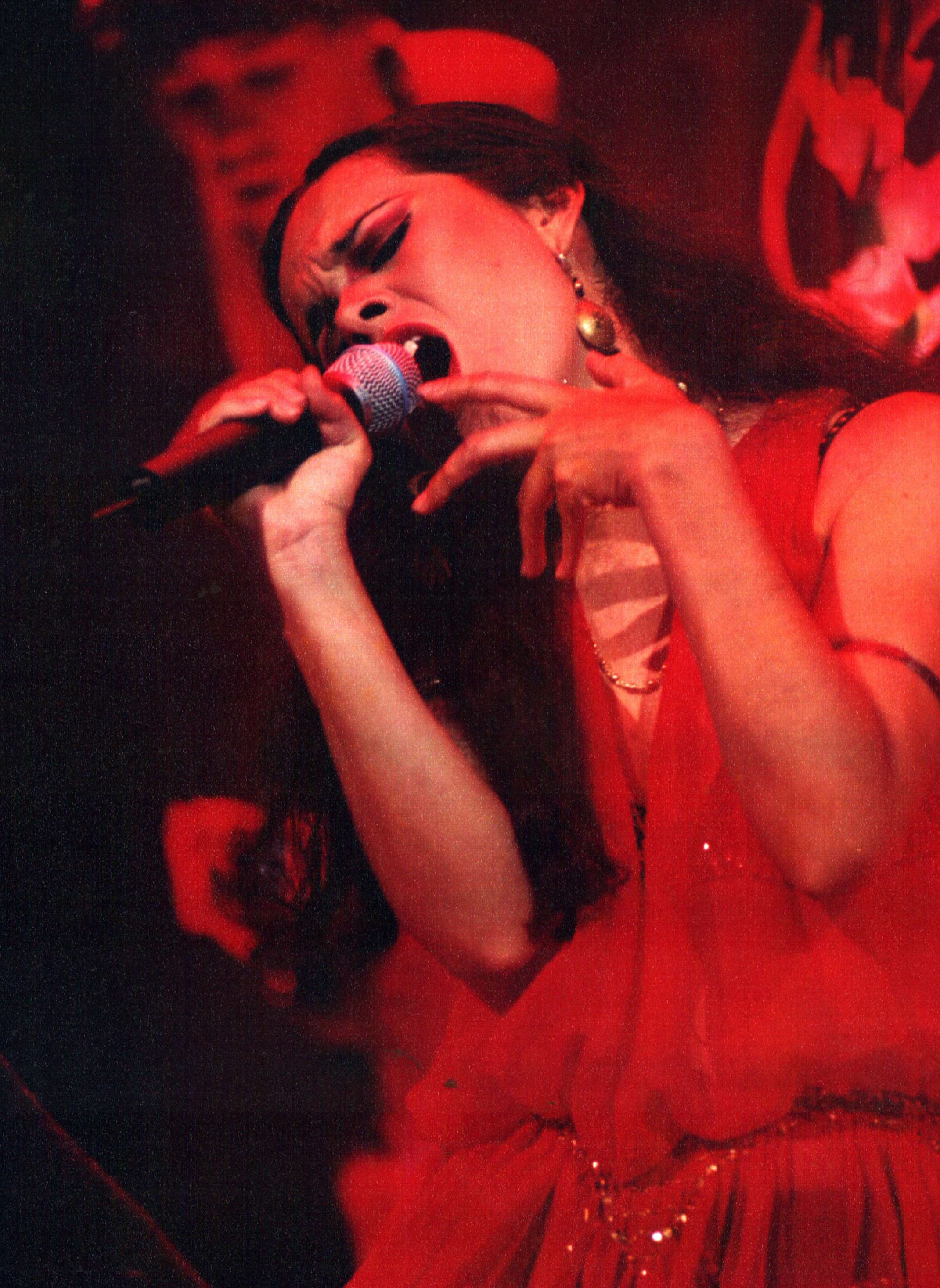The August 3, 1998, issue of Time Magazine was very significant to Latin American rock. Its cover story, titled “Era of The Rockera,” featured women coming out of the rock ranks in various countries to reclaim a place in the male-dominated genre. Shakira and Aterciopelados’ Andrea Echeverri appeared in the piece, but the cover donned two Mexican singers: Ely Guerra and Julieta Venegas — casting that country’s scene as leading the way in terms of equality. Yet the feature told only part of the story, considering a key figure was missing.
A year before the Time cover, Mexico City’s Santa Sabina released the recording of their MTV Unplugged concert. Comprised of 14 songs that could pass for a greatest hits album, the concert proved to be a high point for the band, following three successful records that positioned them at the front of the rock mexicano movement. MTV Unplugged showcased their ability to mix virtuosic instrumentalism, gothic melodies, and jazz and prog-inspired arrangements to make some of the most intriguing music of the era. At the center of it all was Rita Guerrero, who revealed herself as a powerful and intriguing front person, thanks to her stage moves, vocal range, and charisma. After the release of MTV Unplugged, lineup shifts forced Santa Sabina to go on a hiatus, occasionally reuniting to record a few more albums while Guerrero explored Colonial-era music and focused on motherhood. In 2011, Rita Guerrero died following complications from breast cancer.
Santa Sabina formed in 1989 just as Rock En Tu Idioma was gaining commercial success all over Latin America. In Mexico, Caifanes had broken open rock music on mainstream radio and television a year earlier with their crossover hit “La Negra Tomasa.” Although people like Ulalume of Casino Shanghai and Kenny Avilés of Kenny y Los Eléctricos predated Santa Sabina, the band had a strong impact. Santa Sabina played shows alternating with Café Tacvba and Maldita Vecindad, yet never received the accolades of their contemporaries, nor their lasting presence.

Rita: El Documental (Rita: The Documentary) doesn’t attempt to correct this, rather it focuses on Guerrero as a person — from her childhood to her passing. The documentary tells its story through archival footage shot in Super-8, 16 mm, and 32 mm film, as well as interviews with friends and family. Among those interviewed are numerous members of Santa Sabina — including all the original ones — which makes it essential not only to understand the band, but to also understand a time period in Mexican rock music.
Directed by Arturo Díaz Santana, Rita tells its story in an anarchic sort of narrative, following a loose chronology that unfolds without direct narration; photographs lead to newer testimonies, then cut to old TV interviews with Guerrero and back again. Fittingly, the narrative of the documentary unfolds organically as close acquaintances of Guerrero remember her through anecdotes, insights, and even some criticism of her least positive qualities. Díaz Santana likens this format to a choir. “It’s fitting that Rita was a choir conductor, and the film ended up resembling just that,” he told Remezcla ahead of the documentary’s screening at Hola Mexico Film Festival in Los Angeles.
“I got to know her personally, we became friends for 10 years,” Díaz Santana said about his relationship with Guerrero. “I have been friends with Aldo [Max, her partner and father of Guerrero’s son, Claudio] since we were in grade school. [Rita and I] had similar ideas about art and politics and a similar sense of humor. We traveled together, we did ‘shrooms together in Oaxaca, stuff like that. I was not very aware of her stature as a singer — of course, I knew about Santa Sabina but I was too young when they were around — but I love how legitimate she was as a person. So I thought about paying tribute to her in the form of a documentary.”

Rita reveals a complex person with a vision all her own. While some viewers might want to watch it to learn more about the Santa Sabina story, the other aspects of her life are equally as fascinating: from her restlessness as the 11th offspring of a conservative household in Guadalajara, to her participation in experimental theater as a teenager. Her political activism is also on full display — yet not discussed in detail — like her involvement with the Zapatista movement. However, for Díaz Santana, her spirituality served a bigger revelation. “I kind of sensed from the time I knew her that she had a very deep spiritual side, but it was surprising to see it come through in the documentary. She came of age in the ’70s when there was a lot of utopian thinking with left-leaning people, and communism was very much nonreligious, but she was different. She didn’t practice any religion, but as you can see in the documentary, she had a way to communicate with God through music.”
Although the documentary explores many facets of her life, Santa Sabina remains a big focus because the band gave her a platform to exploit most of her personality in a single artistic vision. The Mexican music scene has come a long way since the “Era Of The Rockera,” yet still fails to canonize one of the most elemental figures in its history. Perhaps Rita could help spread the word about the legend of Rita Guerrero by showing the human behind the mic.
Rita: El Documental plays at the Hola Mexico Film Festival on June 6, 2019.







